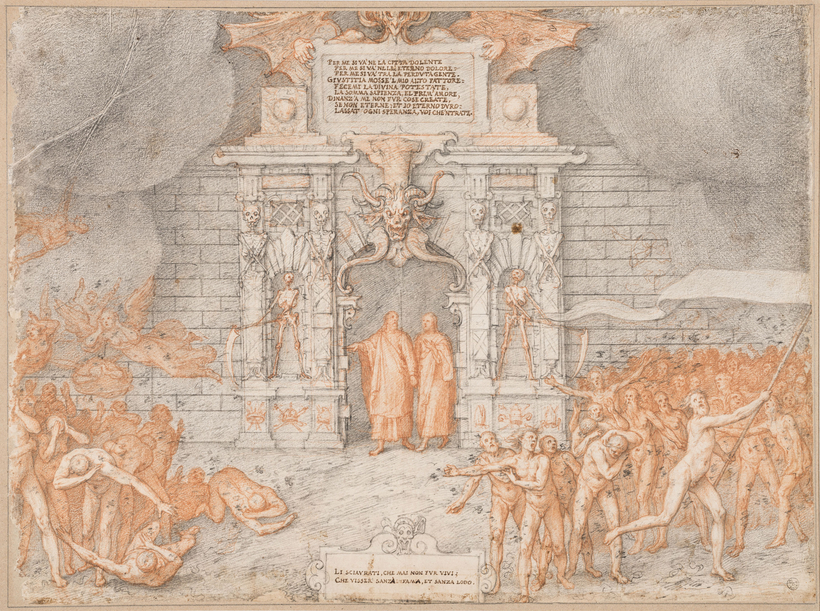“Thence we came forth to rebehold the stars,” wrote Dante Alighieri, to describe the hopeful passage from hell to purgatory in his Divine Comedy, completed in 1320. These words were thought to have comforted the Renaissance painter Federico Zuccari at the end of the 16th century, when he was living away from his native Italy and illustrating Dante’s work. The line also provided inspiration for the Uffizi Gallery’s new online exhibition of Zuccari’s Divine Comedy drawings, timed to the 700-year anniversary of Dante’s death.
To call this show a rare thing would be an understatement. The 88-drawing collection, created in red and black ink, has never been displayed in full. In 1865, to mark both the 600th anniversary of Dante’s birth and the Italian unification, a number of sketches were shown in Florence. In 1993, a few others saw light in a small exhibition in Abruzzo. That’s it.

The collection is thermoregulated and stored without light by the Uffizi, which has owned the drawings—originally bound in a single volume, with each sketch appearing opposite the verse it illustrates—since 1738. Before that, it belonged to the Medici family, who came to own the collection only after Zuccari’s death, in 1609. The painter kept hold of his work, which included a portrait of Dante, transcriptions of Dante’s text, and 28 sketches of hell, 49 of purgatory, and 11 of heaven, throughout his life. Critically, Zuccari also recorded his own commentary, very uncommon among Renaissance artists, says the Uffizi’s director, Eike Schmidt.
So while museums around the world have scrambled to make their exhibitions available online during the pandemic, the stars have aligned for the Uffizi: exactly seven centuries after Dante’s death, here is an oeuvre best displayed virtually, where viewers can zoom in on the high-resolution images for as long as they want. Each sketch in the exhibition is accompanied by its original caption, with English translations coming this week. “Comprising both text and images, the virtual medium also opens up the possibility of breaking free of Dante’s linear narration,” says Schmidt. “You can jump around to different drawings and personalize your viewing experience.”
Events commemorating the anniversary are expected to take place throughout the year in Florence, Ravenna, Rome, and other Italian cities. The Uffizi is also planning a major Dante exhibition in the northeastern town of Forlì, where the poet fled in 1302, which will feature works by Michelangelo, Nicola Monti, and Andrea del Castagno. In the meantime, “To Rebehold the Stars” is available to view anytime, anywhere. —Julia Vitale


 Discover
Discover